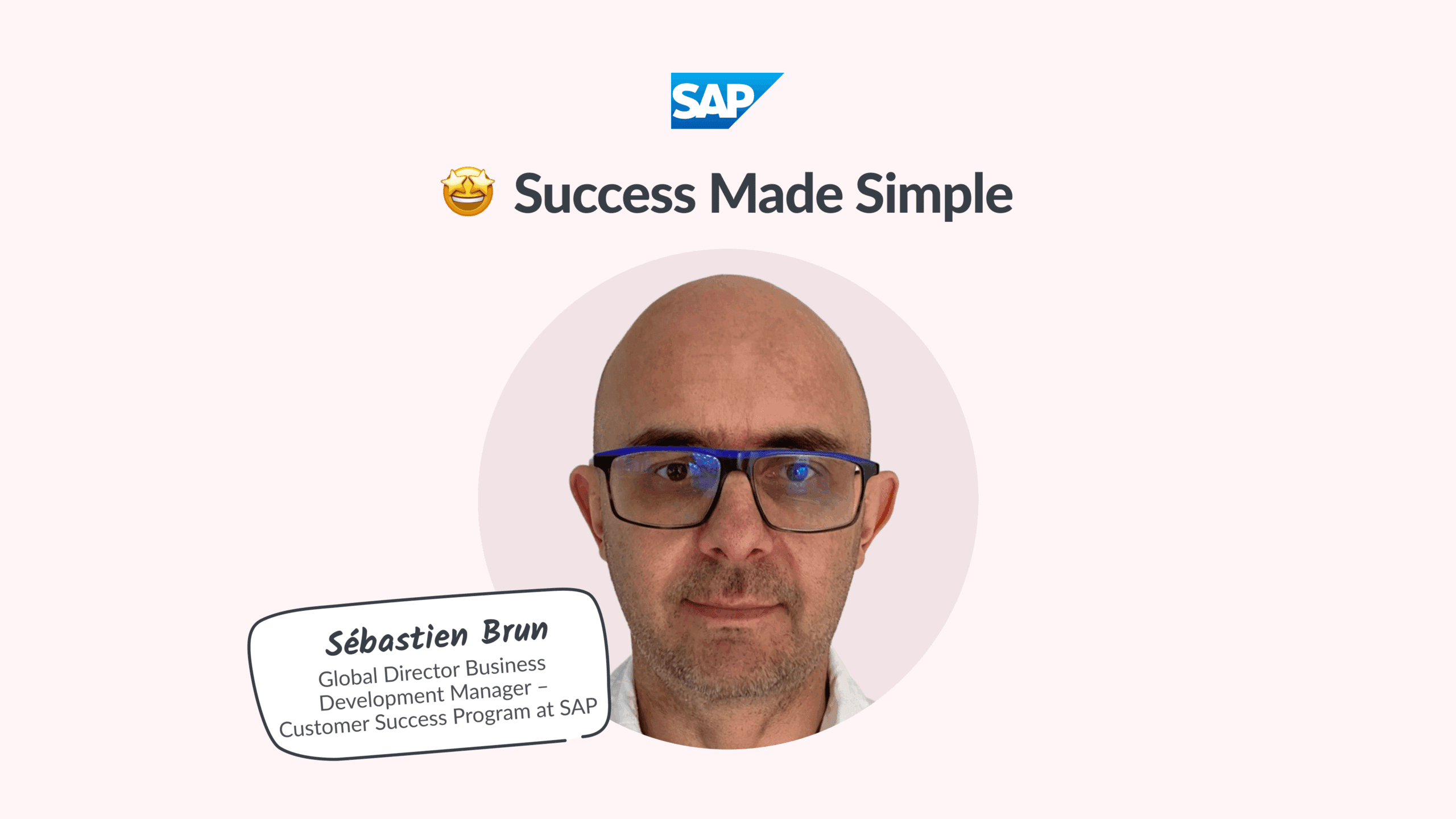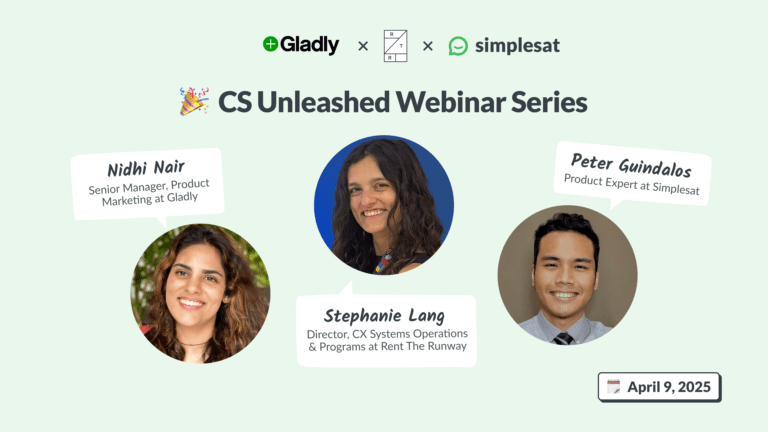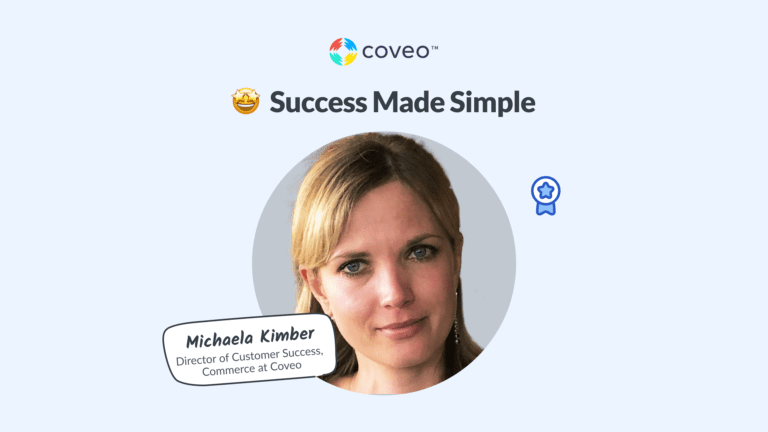From support to global thought leader, Sébastien Brun has built one of the most refined Customer Success programs we’ve ever encountered. In this interview, he reflects on his 25-year journey: growing support teams from scratch, scaling high-touch CS at SAP, and making the case for paid CS programs.
🚀 From engineering to enterprise CS
Q: Can you walk us through your journey to becoming a CS leader? What pivotal experiences shaped your leadership style?
Sébastien: I have an engineering diploma, and I started in telecom and microelectronics. I quickly moved into customer support, answering questions and resolving tickets. It was a reactive role. I did that for a US-based company for around 10 years, and then I joined a small French startup as their first customer support hire. They asked me to build their support organization: processes, tools, everything. When I left after four or five years, we had two strong support teams with more than fifteen people based in several European countries.
Then I moved into customer success. I joined a US-based SaaS company, in the HR field, and I worked remotely – this was in 2013, remote work was still unusual! I was a CSM working with large enterprise clients in Europe. I usually worked with just two to five big customers at a time.
A key part of my work was delivering a paid customer success offering — a kind of VIP experience. Clients paid not just for software licenses, but for extra services:
- expert sessions,
- tailored documentation,
- advanced training.
After 8-9 years, I moved into a more global role, and I became responsible for managing and evolving the paid CS offering. I was like a product manager or a program manager.
I added a second offering specifically designed for our biggest customers. The existing offering had a broader target, available to almost all customers.
Today, I’m in a business development role. I work with sales colleagues to help them understand and sell this paid offering. Selling services is very different from selling software. It’s a different conversation. So now I’m still in CS, but on the selling side, supporting our teams.
🗺️ Building a world-class CS team
Q: How do you lead globally in a remote environment?
Sébastien: We have customers, CSMs, and sales colleagues all over the world. Everyone has their own challenges but I have regular meetings and calls with my stakeholders in all countries, trying to make sure that they can count on me when they need me — and I can count on them when I need something.
I try to be available when people need help. I have stakeholders in California, New Zealand, but I make myself available to them as much as possible despite the time differences. I try to build relationships based on trust.
Q: What do you look for when hiring for customer success roles?
Sébastien: When I’m participating in the interview for customer success people, I mainly look for empathy from the candidates. Empathy is very, very important.
My team comes from very different backgrounds. I’ve hired people with no technical background or no knowledge of the industry. All that can be learned. But empathy is much harder to teach.
I try to understand during the interview if someone has that ability to connect with customers, to understand them completely.
But I also need to know if they can say “no.” That’s important. If you are super empathic, you may want to always say yes! But in customer success, sometimes you need to say no.
I also involve the team in hiring. Towards the end of the process, I ask a few team members to have informal interviews with the candidate. Just talk, no agenda.
The CS team deals with quite a lot of pressure, and they need a really good internal organization. They also need to help each other. So for me, it’s very important to make sure that the existing team is part of the hiring process. That helps me ensure that if we get someone new to the team, they will be able to work well together.
⚠️ How to prevent paid CS churn
Q: What’s the biggest challenge you’re facing right now in CS strategy?
Sébastien: My main focus is churn in the paid customer success offering — not the software, but the additional service.
At renewal time, customers may not understand what paid CS offering is or why it matters. They don’t make a difference between the software and the service they’re receiving. They take a look at the contract, see this offering, and they think, “What is this? It costs too much. I don’t need it, I don’t even use it.”
So, the main challenge is to clarify and reinforce the specific added value of this paid customer success offering.
It’s on the CSM to do this, from day one of the contract. “You’re getting this expert session because of the paid CS,” or “This custom documentation is part of your paid services.”
If that’s not clear, we lose them at renewal. This is the challenge, and it’s complicated! Paid CS offerings aren’t widespread yet, so we can’t just assume the customer knows what they’re paying for.
Q: Please tell us more about that! What value does the paid CS model bring that customers need to know about? And how do you avoid friction?
Sébastien: The friction comes at renewal, when the customer doesn’t see the value this offering brings. So the work has to start early, we need to make sure the customer understands what they’re getting when they sign the contract.
We offer additional documentation, such as exclusive webinars, but the main point is they have access to experts. Our software solutions can be very complex; experts who can tailor the product to the customer’s specific industry bring a great deal of value.
In our case, the software isn’t just complex, it also evolves very quickly. That means we also provide release management as part of the paid CS offering. Each release brings hundreds of changes. It’s important for the customers to understand exactly what the new features are bringing, what benefits they’re getting out of it, and what needs to change in their operations.
Without help, customers are overwhelmed. The strategic value of CS is quite simply to help the customer get the most out of the product.
📈 How to scale CS and prevent churn
Q: Having worked in startups and enterprises, what’s a myth you’d bust about CS at scale?
Sébastien: I’m the most connected with the French CS ecosystem, and in France, customer success is mainly driven by startups or small companies. Of course, the fundamentals are the same regardless of company size. But startups move fast. They have structural limitations, but they can try different things more quickly.
I think big companies can learn a lot from what startups are doing. Sometimes it takes quite some time to get approval to try new things or to incubate new ideas in a big company, especially when it comes to customers and customer revenue. For me, it took a while to get used to this pace.
On the other hand, in enterprises, we have more resources and can do things in an organized way. Big companies bring structure. Really, both can learn from each other! I don’t see a huge disconnect, just different ways of doing the same job.
Q: How do you reduce churn and drive growth with the paid offering?
Sébastien: I don’t track churn on the software; I track churn on the paid CS offering. And the worst-case scenario for me is when the customer keeps the software but drops the paid offering. That’s what I’m trying to prevent.
If customers use our services — including expert-led sessions all along the customer journey — the renewal rate goes up by 15–20%. If they don’t use anything, the renewal is much less likely. So we push CSMs to position the services throughout the journey. Not just offer them, but suggest specific ones at the right time.
We also train our CSMs constantly. The paid offering evolves with new services added regularly, and we need to make sure the CSMs understand what’s new, what’s changing in the portfolio. They need to stay enabled and up to date.
And in terms of upsell and cross-sell, CSMs are our best salespeople. Even for clients without a paid offering, they can suggest it when they see a need. That’s why we created a second tier of paid CS for our largest customers, and we encourage upsell from the standard version. But again, it only works if the CSM truly understands and communicates the value when needed.
🔢 KPIs and automation
Q: What metrics do you use to track success? And how does AI fit in?
Sébastien: My KPIs are bookings, renewal rate, and churn for the paid CS offering. Pretty standard sales metrics.
On the AI side, we’re still figuring out the best ways to use it. But here’s a specific example of how we’re using AI to add value to our paid CS offering.
As I said, our product is constantly evolving, it regularly releases hundreds of new features and enhancements. And it’s very, very difficult for a customer to understand what will apply to them, what will impact them, what will bring value for them. They’d have to go through a thousand pages of documentation explaining everything.
So we have started to use an AI tool which maps the content of the release on one side and on the other side, what features/modules the customer is using.
Basically, we use AI to make a condensed report that really focuses on what’s important, what’s key for the customer in the release.
It auto-generates one report for each customer. All this is part of the paid CS offering. That’s real value… and a great sales argument.
Q: What trends will shape CS over the next 2–3 years?
Sébastien: AI is really a game-changer, and it’s already changing a lot of things. The CS teams that learn how to use it well will scale faster and be more efficient. The challenge is to use it in a way that makes sense for the context you’re working in. Every company is different, they all need different solutions.
🎓 Advice for succeeding in CS
Q: What do you wish you’d known earlier as a CS leader?
Sébastien: Good question! Early in my career, I focused a lot on hard skills. I’m an engineer, so that made sense.
But I realized, year after year, that what really matters is the behavior of each individual. Soft skills, interpersonal skills, are critical. Especially in customer success.
How you talk to people, how you listen, how you build relationships — that’s what makes the difference. I tell young professionals today: learn the technical stuff, yes, but also practice empathy, communication, collaboration.
Learn other languages. Work with people from different parts of the world. That will change your perspective for the better..
🌟 Paid CS is a strategic shift
Q: Any final thoughts?
Sébastien: I think it’s very important for customer success leaders to start thinking about a paid CS offering if they do not have that yet.
Because, of course, it cannot be mandatory. You still need to have customer success free of charge for some of the customers.
But for customers who want to get more out of your product, you need to build something that will be beneficial for everyone.
To be honest: In a lot of organizations, CS is seen as an extra cost. That makes it easy to cut if the company gets into financial distress.
But if you have a paid CS offering, your position changes. You’re not a cost to be cut, you’re bringing in revenue. You become a strategic part of the business. That changes everything.



